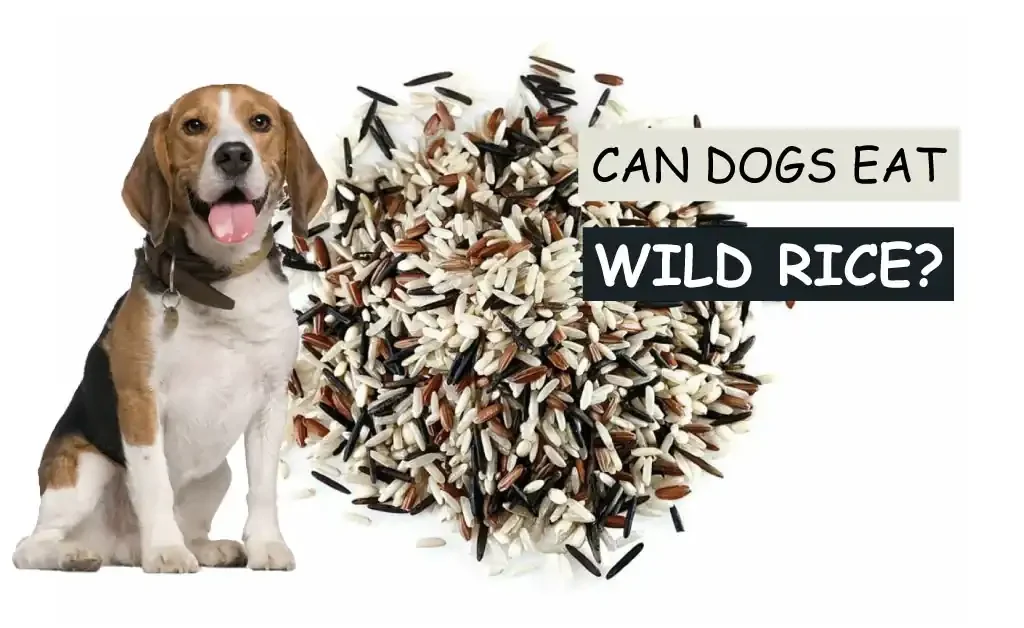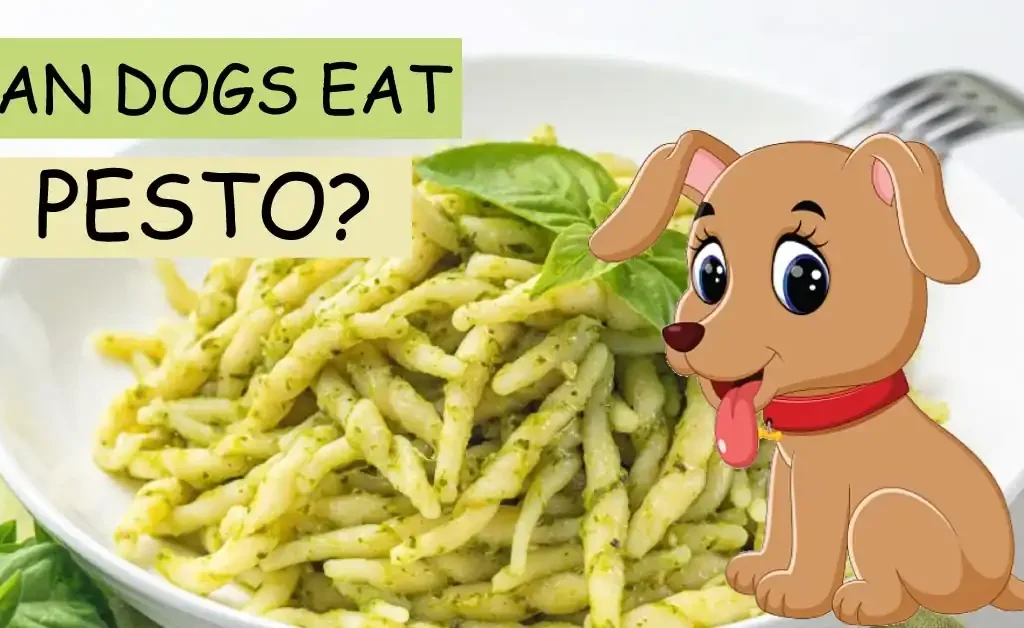The topic of what our canine companions can safely eat often leads us on gourmet adventures in the realm of doggie cuisine. Today, we’ll take a delectable excursion into the world of wild rice and its place at the canine table. Can dogs eat wild rice?
While we like our canine companions and want to share our gastronomic delights with them, we understand the limits of their dietary requirements. Whether you’re a dog owner with a culinary interest or a pet lover looking for healthier feeding options, this exploration will leave you and your four-legged buddy wanting to learn more and try something new.
Can Dogs Consume Wild Rice?
Wild rice can be consumed by dogs in moderation. When prepared appropriately, wild rice is a nutritional option for dogs. It provides essential nutrients such as fiber, protein, vitamins, and minerals to assist your pet’s general health.
However, making wild rice without additional seasonings, spices, or sauces is critical. Avoid using butter, oil, or salt when preparing wild rice for your dog, as these might damage their health.
Wild rice can be a healthy addition to your dog’s diet as a treat or as part of their daily food. It can provide variety while also contributing to their nutritional requirements. To avoid digestive troubles, properly prepare and allow it to cool before serving.
Wild rice should be introduced carefully and monitored, as with any new addition to your dog’s diet. Consult your veterinarian if you experience any side effects, including digestive discomfort or allergies. While wild rice can be a nutritious addition, it should not be used as a well-balanced commercial dog food.
How Does Wild Rice Help Dogs?
Wild rice can benefit canines in various ways, providing significant health benefits when included in their diet.
1. Digestive Health
Wild rice is high in dietary fiber, particularly insoluble fiber. This fiber helps dogs maintain a healthy digestive system in various ways. It thickens their feces, encouraging regular bowel movements and lowering the risk of constipation. Furthermore, dietary fiber promotes the growth of good gut bacteria, aiding digestion and nutritional absorption.
2. Consistent Energy
The complex carbohydrates in wild rice provide a consistent and prolonged energy source for dogs. Complex carbohydrates, as opposed to simple carbs, which induce fast spikes and falls in energy levels, are slowly digested, maintaining a continuous supply of energy throughout the day. It is perfect for busy, working dogs or dogs participating in agility or sporting activities.
3. Nutrient-Dense
Wild rice is a nutrient-dense grain. It is high in vital vitamins and minerals, such as B vitamins (thiamine, riboflavin, and niacin), phosphorus, magnesium, and zinc. These nutrients are essential for metabolism, energy production, bone health, muscle function, and skin and coat health in dogs.
4. Weight Management
Because of its naturally low-fat content, wild rice can be a part of dogs’ diet that need to lose weight. It helps individuals to eat a complete and substantial meal without consuming too many calories, which aids in weight control and obesity prevention.
5. Gluten-Free Alternative
Because wild rice is naturally gluten-free, it is a safe grain option for dogs with gluten sensitivity or allergies. Gluten-related disorders in dogs are less common than humans, but they can affect particular breeds or individuals.
6. Muscle Maintenance
While not as high in protein as meat, wild rice contains a considerable amount. Protein is required for muscle maintenance and repair, supporting the body’s enzymatic operations and contributing to general growth and development.
7. Diverse food
Including wild rice in your dog’s food adds variety to his nutrition. A varied meal that stimulates their taste senses and fosters good eating habits can benefit both dogs and people. Different food alternatives can make mealtime enjoyable for picky eaters and may lead to better overall nutrition.
Can dogs eat wild rice blend? While wild rice has numerous health benefits, it should be used as part of a balanced diet rather than as the primary source of sustenance for dogs. Commercial dog food is specially created to satisfy their dietary demands, and a veterinarian should evaluate any nutritional adjustments to verify they are appropriate for your dog’s needs.
Wild Rice Poses Health Risks to Canines
While wild rice can be a beneficial addition to a dog’s diet, there are several health risks and precautions to be aware of.
1. Digestive Issues
Introducing wild rice too quickly or in excess might cause dog digestive problems. The high fiber content may induce diarrhea or gastrointestinal discomfort in your dog, mainly if he is not used to a fiber-rich diet. To avoid this, introduce wild rice slowly and observe your dog’s reaction.
2. Allergic Reactions
While wild rice is not a typical dog allergen, it is important to be mindful of potential allergic reactions. Individual sensitivity to grains, especially wild rice, may exist in some dogs. After introducing wild rice into their diet, keep an eye out for indicators of allergies, such as itching, skin problems, ear infections, or gastrointestinal difficulties.
3. Caloric Intake
Like other cereals, wild rice includes calories. Excessive feeding without altering your dog’s overall calorie intake can result in weight gain. Assess the calorie count of wild rice and ensure it suits your dog’s daily caloric demands, especially if they’re on a weight-loss plan.
4. Portion Management
Proper portion management is essential when integrating wild rice into your dog’s diet. Serving too significant quantities can throw off the nutritional balance of their meals, potentially resulting in dietary imbalances or deficiencies.
5. Methods of Preparation
How wild rice is prepared can impact its fitness for dogs. Avoid adding flavors, spices, butter, oil, or salt when preparing wild rice for your dog. These additions, notably the salt level, can be hazardous to their health, leading to sodium-related health concerns.
6. Cooked Wild Rice Storage
Proper storage of cooked wild rice is vital to avoid spoiling and bacterial growth. To keep leftover cooked wild rice safe for your dog, store it in the refrigerator and eat it within a few days.
7. Individual Tolerance
Because every dog is different, their tolerance for certain foods can vary. Wild rice may be tolerated well by some dogs but not by others. When introducing new meals, including wild rice, watch your dog and call your veterinarian if you observe any unpleasant reactions or health concerns.
8. Balanced Diet
While wild rice has nutritional benefits, it should be consumed as part of a well-rounded diet. It should not be used in place of commercial dog food. It is carefully designed to suit all of their nutritional requirements. Call your vet to ensure that your dog’s overall diet is well-balanced.
9. Specific Health Conditions
Consult your veterinarian before integrating wild rice into your dog’s diet if they have specific health issues, such as diabetes or food allergies. Special dietary considerations may be required.
How Do I Incorporate Wild Rice into My Dog’s Diet?
Can dog eat wild rice? When done appropriately, adding wild rice to your dog’s diet may be a nutritious and fun experience. Here’s a step-by-step tutorial for incorporating wild rice into your dog’s diet:
1. Consult Your Veterinarian
It is critical to ask your vet before incorporating any new food into your dog’s diet, including wild rice. They may assess your dog’s health, dietary needs, and any allergies or sensitivities influencing their ability to eat wild rice.
2. Selecting High-Quality Wild Rice
Select high-quality, unseasoned wild rice. Check whether it contains additives, preservatives, or flavorings that could harm your dog. Look for entire, natural wild rice kinds.
3. Cook Wild Rice Plain
Cooking wild rice for your dog should be a simple process. Begin by thoroughly washing the rice in cold water to eliminate extra starch. Then, as directed on the package, follow the cooking directions, which usually involve simmering the rice in water. Avoid adding seasonings, oils, or salt during the cooking process.
4. Let it be Cooled
Allow the wild rice to cool completely after cooking before offering it to your dog. This step is vital to avoid any discomfort or risk of burns from hot rice.
5. Portion Size
Wild rice portions should be decided in consultation with your veterinarian. They can advise you on how much wild rice to put in your dog’s daily diet based on size, age, activity level, and overall health.
6. Include Cooked Wild Rice in Meals
You can gradually incorporate cooked wild rice into your dog’s meals. Begin with a modest dosage and gradually increase it over a few days to give your dog’s digestive system time to adjust. A frequent and practical way to integrate wild rice into their diet is to mix it with their usual commercial dog chow.
7. Avoid Seasonings
When offering wild rice to your dog, keep it basic and unseasoned. Avoid adding substances that may harm your dog’s health, such as salt, butter, oil, or spices.
8. Observe Your Dog
Keep a close eye on your dog’s reaction to adding wild rice. Look for allergy symptoms (such as itching, hives, or gastrointestinal problems) or other adverse reactions. If you detect any problems, contact your veterinarian right away.
9. Keep an Eye on Your Dog’s Weight
If they are on a diet, limit the amount of wild rice consumed. To avoid weight gain, ensure it fits their daily calorie requirements.
10. Fresh Water
Always give your dog fresh, clean water, especially when introducing new items into their diet. Their whole health is dependent on enough water.
While wild rice can be a healthy addition, it should supplement rather than replace your dog’s usual commercial dog food. Maintaining dietary variety can excite mealtime while providing a broad spectrum of nutrients.
You may safely and efficiently include wild rice into your dog’s food by following these procedures and consulting your veterinarian, ensuring it corresponds with their health and dietary needs.
History of Giving Wild Rice to Dogs
Dogs have been fed wild rice for ages when they were primarily hunting and working companions for humans. Wild rice, formally known as “Zizania,” is indigenous to North America and served as a valuable food source for indigenous peoples long before European invaders came.
Native American tribes relied on wild rice as a primary diet, particularly those living in areas where wild rice grew abundantly, such as the Great Lakes and the Upper Midwest. They harvested wild rice from lakes, rivers, and marshes, and this nutrient-rich grain became an essential part of not just their human diet but also the food of their dogs.
Dogs were essential companions in indigenous hunting and foraging activities. They accompanied hunters on waterfowl and small game hunts in areas where wild rice was common. As a result, dogs naturally ingest wild rice when assisting in these chores.
Wild dogs and early domesticated dogs would have had access to various meals in their natural condition, including plant materials such as wild rice. Their nutrition would have been more varied and unrestricted than modern dogs.
As dog ownership evolved and commercial dog food grew more popular in the twentieth century, the ancient practice of feeding dogs wild rice faded. Wild rice can be nutritious to a dog’s diet, especially when properly prepared and presented. The availability of local resources and cultural customs impacted the historical practice of feeding dogs in indigenous societies.
Dogs nowadays have access to various commercial pet diets developed to fulfill their unique nutritional needs. However, wild rice can still be fed when appropriate as a natural and beneficial treat.
Last Thoughts
Can dogs eat wild rice? While wild rice can benefit dogs when properly prepared and served, it is necessary to be aware of potential health risks and exercise caution when introducing it into their diet. Careful monitoring, portion control, and a balanced diet are essential to ensure your dog’s health and well-being.
Frequently Asked Questions (FAQs)
Q: Is it necessary to rinse wild rice before cooking it for my dog?
A: Rinsing wild rice before cooking removes extra starch and potential pathogens.
Q: Can dogs eat wild rice with kidney problems?
A: Before introducing wild rice to dogs with kidney problems, consult your veterinarian because dietary guidelines differ.
Q: Is wild rice safe for small dog breeds?A: Wild rice is generally safe for tiny dog breeds when appropriately adjusted and proportioned.




